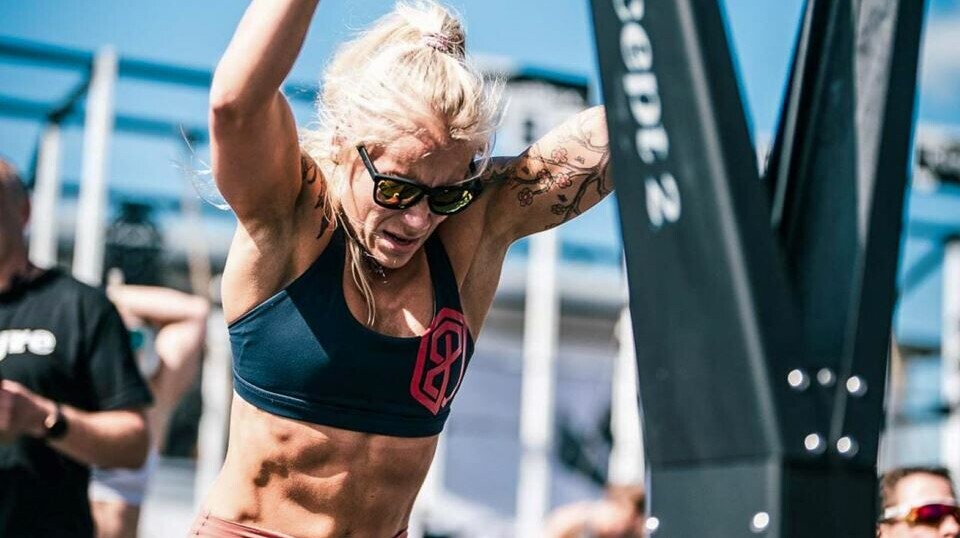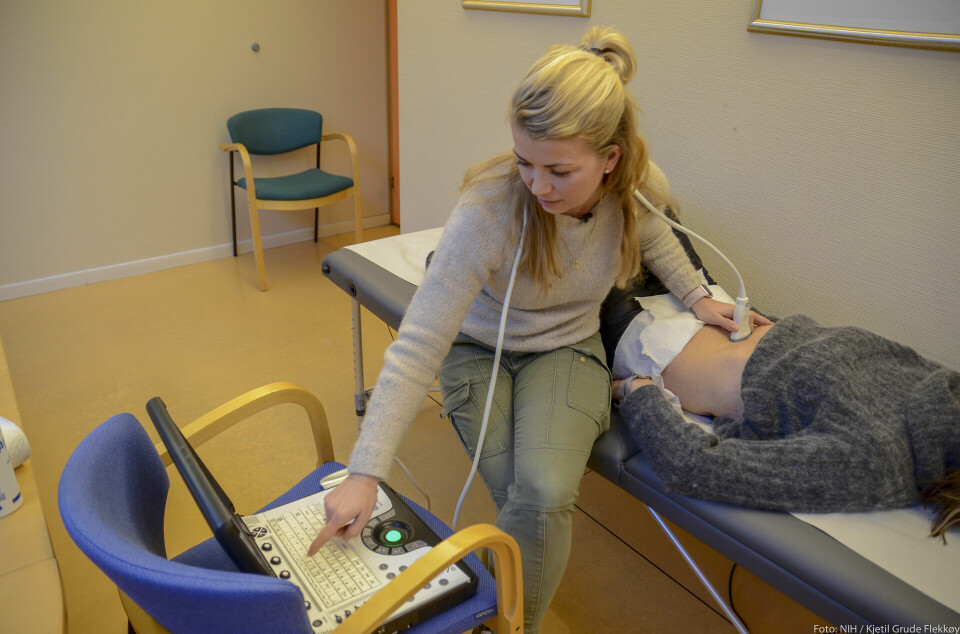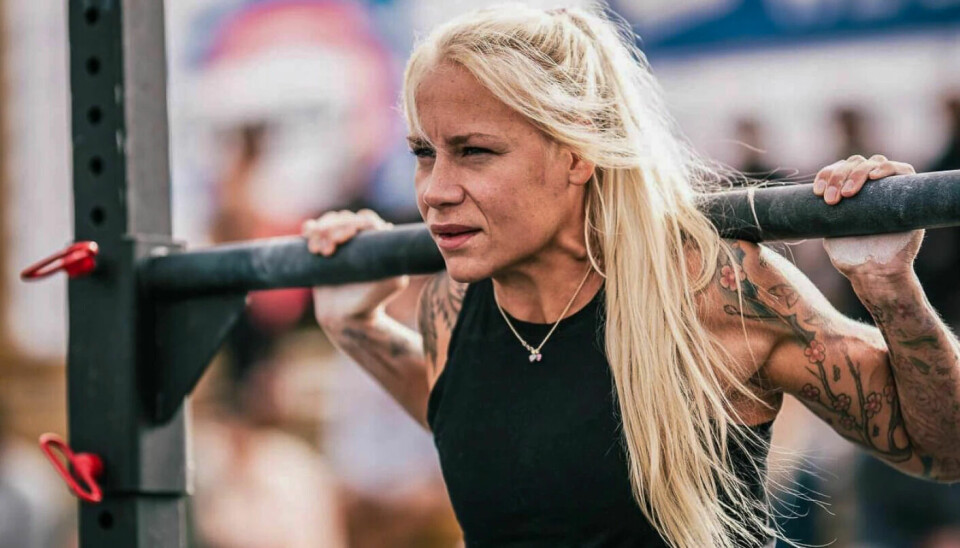THIS CONTENT IS BROUGHT TO YOU BY The Norwegian School of Sport Sciences - read more

Helene has abdominal separation, but can still lift heavy weights
Many new mothers are anxious about strength training. Helene Vabø Wilsgaard doesn't feel that her abdomen is an obstacle to heavy strength training, and this is supported by new NIH research
“It's wonderful to lift heavy weights and feel that I am strong and can achieve what I want,” Helene Vabø Wilsgaard says.
She has been involved in CrossFit for many years and has had seperated abdominal muscles since 2008.
Wilsgaard is one of many mothers who participated in the research project on diastasis recti (DR), which means having a gap between the abdominal muscles after childbirth.
She states that her curiosity and desire for more knowledge on the subject are the reasons she chose to participate in the study.
Social media gives mothers the wrong impression
Although many participants who signed up for the study believed they had separated abdominal muscles, Wilsgaard was one of the few who were actually diagnosed.
Over 70 per cent of the women who signed up for the research project believed they had DR, but this was refuted when they came in for screening.
The women also stated they most often used social media and websites to get advice on treatment for DR.
“Many women get the impression from social media that it's very common to have DR. But many haven't been informed that there is a natural healing process in the body after childbirth," doctoral fellow Sandra Bjordal Gluppe says.
She explains that for some, the gap closes immediately, while a study from Ahus Hospital has shown that it can take up to a year for others.
“You have to give it time, and you don't need to worry right away,” she adds.
Changes in the abdomen are normal
Gluppe is also a physiotherapist. She has examined separated abdominal muscles after childbirth in multiple different studies.
One study found that many of the 460 first-time mothers who participated were concerned about the appearance of their abdomen after childbirth.
Those who reported having a bulging abdomen, characteristic of DR, were also less satisfied with their appearance than those who did not.
“Many have questions about their abdomen and are afraid of making mistakes. It's important to convey that it's completely normal for the abdomen to change after childbirth, and that it is nevertheless still possible to use the abdominal muscles,” Gluppe says.

According to Gluppe, very few have what can be classified as a significant degree of seperated abdominal muscles, meaning over 5 centimetres. There have been few of these cases in the studies, and unfortunately, research on this group is lacking.
Sit-ups are not dangerous
One of the main findings of one of Gluppe's earlier studies was that sit-ups/curl-ups are not dangerous or worsen separated abdominal muscles.
Meanwhile, many mothers have heard and read on social media and the internet that they should not do sit-ups and other similar exercises.
Many women are unnecessarily afraid
Helene Vabø Wilsgaard is an active fitness profile on Instagram and also noticed that there is a lot of misinformation circulating on various platforms.
“Absolutely! I work with this myself as well and find that many women are unnecessarily afraid of their abdomen. Many are afraid of natural movement, training, and using their abdomen. It's great to have more studies to refer to, and that the knowledge in this area is improving,” she says.
But for knowledge to improve, Gluppe believes that postpartum follow-up care must also improve.

She believes it is high time that all women are offered at least one check-up appointment with a physiotherapist specialising in women's health after childbirth.
Among other things, to check the pelvic floor muscles, the separated abdominal muscles, and to get guidance on training and activity.
“To think that we in Norway, one of the world's richest countries, have such poor follow-up care of women after childbirth. More is definitely needed. Today, women have to pay to get the right information about, for example, DR. This should be a public service. The benefits would be substantial," Gluppe believes.
Get active
She specifically thinks of women who are afraid that exercise will worsen the situation. The physiotherapist recommends physical activity.
“Of course, there is a vulnerable period after childbirth where you have to figure things out. But it is very important to get started with physical activity and exercise. It doesn't have to be sit-ups or intense strength training; all activity is positive," Gluppe says.
As an example, she mentions going for walks with the baby in its stroller.
"You can resume training gradually. It might be a good idea to consult with a physiotherapist or an exercise physiologist for guidance,” says Gluppe.
For Helene Vabø Wilsgaard, three years have passed since she last gave birth. Today, she works as a CrossFit instructor, a personal trainer, and is taking a master's degree in sports psychology at NIH.

She succeeded by starting gradually with working out and slowly, but surely, building herself up again.
The separated abdominal muscles were not an obstacle.
“I don't think there's any impairment with abdominal muscle separation. The challenge is that your stomach muscles become weak during pregnancy and in the period after childbirth. They must be built up again, as you have to do in all other situations where the body goes through major changes,” she says.
She exercised throughout her pregnancy and right after childbirth as well.
"I started out very ‘slowly’ and built myself up again. I don't feel that my abdomen is an obstacle for what I'm doing now,” Wilsgaard says.
Reference:
Gluppe, S.B. Diastasis Recti Abdominis: An issue postpartum?, Doctoral dissertation at the Norwegian School of Sport Sciences, 2023.
———
Read the Norwegian version of this article on forskning.no

This content is paid for and presented by The Norwegian School of Sport Sciences
This content is created by The Norwegian School of Sport Sciences' communication staff, who use this platform to communicate science and share results from research with the public. The Norwegian School of Sport Sciences is one of more than 80 owners of ScienceNorway.no. Read more here.
More content from The Norwegian School of Sport Sciences:
-
‘Supershoes’ may help you run faster
-
Perfectionists are more likely to suffer from mental health problems
-
Male dominance in Norwegian sport: Top officials depend on a ‘ground crew’ at home
-
Do you have to operate, or is rehabilitation enough to treat an ACL injury?
-
Simple changes increase your speed in the tracks – and in other arenas
-
New measures to prevent eating disorders




































